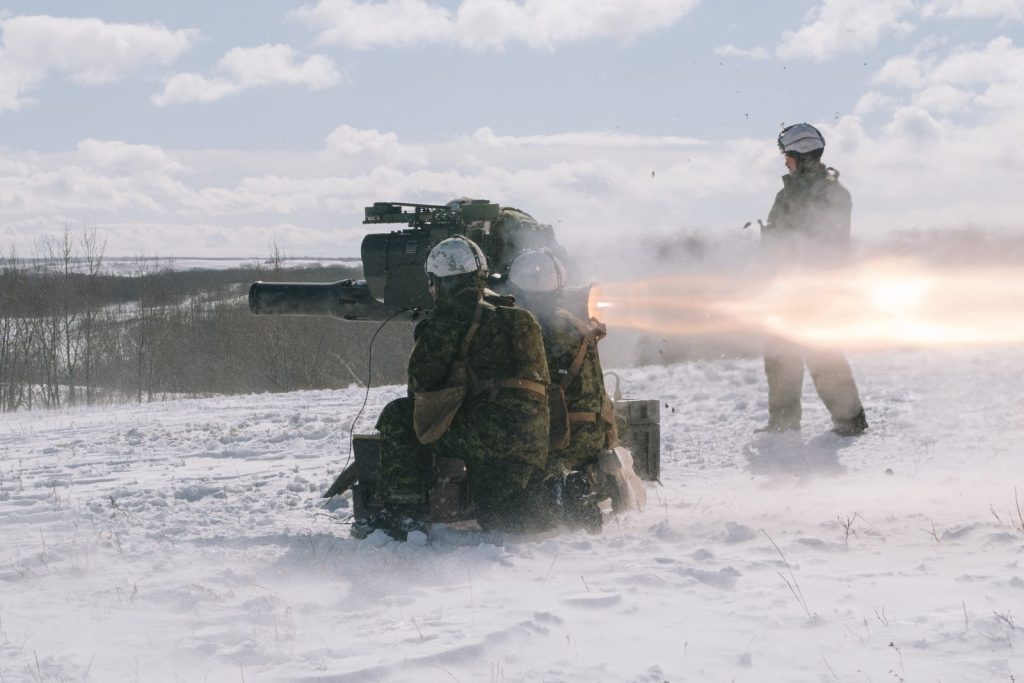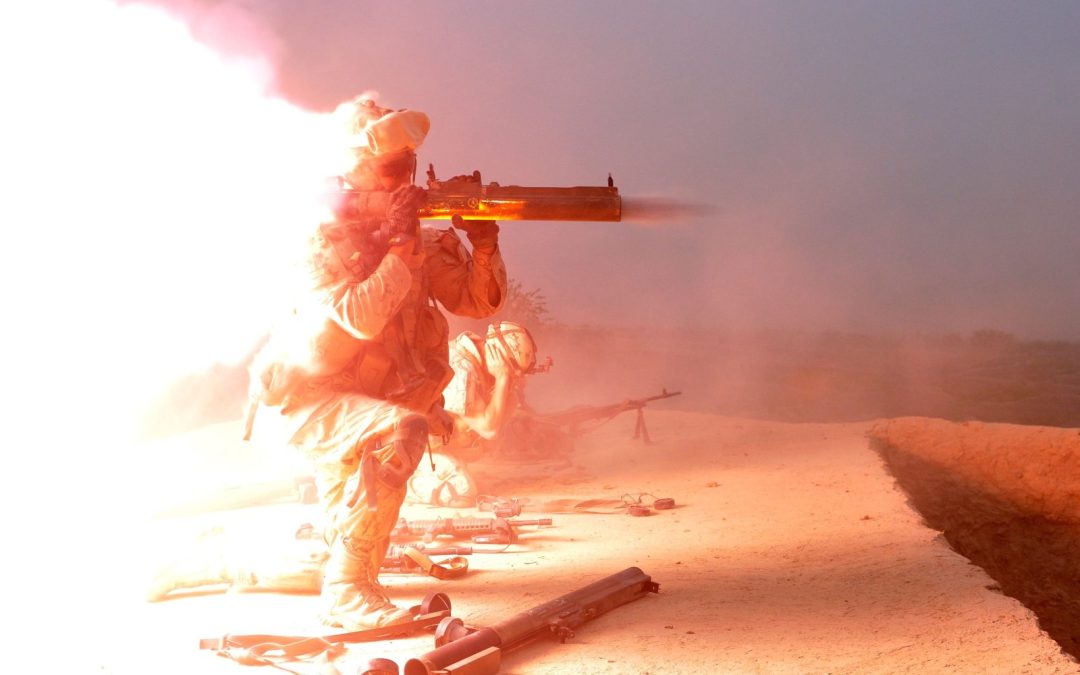by Kevin Wang and HengLiang Wu
Recent combat experiences in Ukraine have shown that portable anti-tank weaponry gives infantry a chance to fight against armoured targets, which are immune to rifles and grenades. The large variety of such weapons can be divided into two categories: Rockets and missiles. The Canadian Army is no stranger to these weapons, as they have long been used. However, due to a change in NATO doctrine emphasizing air- and armour-based anti-tank capabilities and federal budgetary issues, training and procurement of infantry-based anti-tank capabilities have fallen behind, especially for Reservists. It would be detrimental for an infantry unit to face enemy main battle tanks (MBT) without the right weapons. Hence, sufficient capabilities in this regard are required for all infantry units of the Army.
Equipment
Three types of portable anti-tank weapons are currently in service with the Army: The Carl Gustaf recoilless rifle, M72 LAW rocket propelled grenade (RPG) launcher, and the BGM-71 TOW wire guided missile. The Carl Gustaf M2 recoilless rifles are mainly used by Reservists, while the M3 rifles, with lighter weight and strengthened structure, are used by the Regular units.
Though these three types of weaponry all possess some degree of anti-tank capabilities, their effectiveness varies wildly. The M72 LAW, a light RPG launcher, is not meant to be used against any armoured vehicle with protection more than a Russian BMD. Its penetration and range are highly limited unless used at very close range such as an ambush or in urban warfare, which would severely reduce the survivability of the grenadier.
Furthermore, the M72 LAW’s low projectile speed means that it could be prone to interception by active protection systems such as the GL5, currently mounted on the Chinese VT4 MBTs.

Soldiers from the 3rd Battalion, Princess Patricia’s Canadian Light Infantry, conduct a Tube-Launched, Optically Tracked, Wireless-Guided missile range during Exercise Apollo Validation in the Wainwright training area in March 2022. Photo: Cpl Djalma Vuong-De Ramos
In comparison, the Carl Gustaf recoilless rifle provides a better chance at penetrating armour, but still falls short against the front armour of modern MBTs with composite designs. Furthermore, its short range would still require the grenadier to penetrate the defence of enemy light vehicles to attack the intended target, which would usually be a fatal endeavour. Hence, it is safe to conclude that these two types of weapons are generally not suited to anti-tank purposes.
Lastly, the TOW anti-tank missile is the weapon of choice when dealing with an enemy MBT. It has much further range and penetration power, which are the two most important aspects of infantry anti-armour warfare. However, its design no longer keeps up with the latest technology as it does not have fire-and-forget capabilities and is not capable of top-attack options. The small number of launchers possessed by the Army means that it would be nearly impossible to provide all mobilized infantry units in an armed conflict with this kind of protection.
Hence, one of the major procurement priorities of the Royal Canadian Infantry Corps is to acquire a sizable amount of portable long-range high penetration anti-tank missiles. Ideally, every battalion should have a specialized anti-tank platoon capable of operating these missiles, supplemented by existing Carl Gustaf recoilless rifles and M72 LAW launchers.
Training
Since the end of the Cold War, the training emphasis of the Canadian infantry soldiers has shifted much towards combat against lightly armed adversaries. Skills regarding anti-tank weapons that were once highly regarded in previous decades were largely lost. It has been demonstrated in military training missions in Ukraine in the past years that Canadian soldiers were highly deficient in this experience and had to draw on service personnel from the Cold War era to help with teaching. Given an increasingly likelihood of state-sponsored warfare, this could leave Canadians on the frontline in jeopardy facing tanks with rifles and grenades.
In addition, potential adversaries have large numbers of tanks and heavily armoured vehicles, and their preferred land combat tactics involve a high dependency on deep armour penetration. Furthermore, many European NATO allies have reduced their armour corps to an alarming extent, either equipping their armies with obsolete or few operational tanks.
Consequently, infantry training should consider adopting several routes simultaneously. Firstly, introductory anti-tank lessons should be given in basic training to all members of the Army, including Reservists. This helps ensure that no one in future combat would make obvious tactical mistakes under a stressful situation of being attacked by an armour formation.
Secondly, non-armour combat personnel should learn the basic method of anti-tank tactics not involving special weapons, such as the construction of a makeshift tank trap. Thirdly, infantry anti-tank platoons should be equipped with anti-tank missiles and be taught in using them. If training capabilities allows, others should also learn these skills.
Lastly, it could be helpful to invite members of infantry corps from friendly nation that have been in anti-armour combat in recent years to showcase the latest knowledge in this area.
It is clear that Canadian infantry personnel are not properly equipped and lack training and experience for anti-tank warfare. This major operational deficiency must be plugged before the next high intensity combat operation. If not, we face the prospect of a high number of casualties and encirclements and complete destructions of formed units by enemy armour columns. Should the national defence budget be increased in light of the war in Ukraine, addressing this issue should be a priority for the Canadian Army.
Kevin Wang is a recent engineering graduate at Imperial College London in the United Kingdom. HengLiang Wu is studying at Western University.

